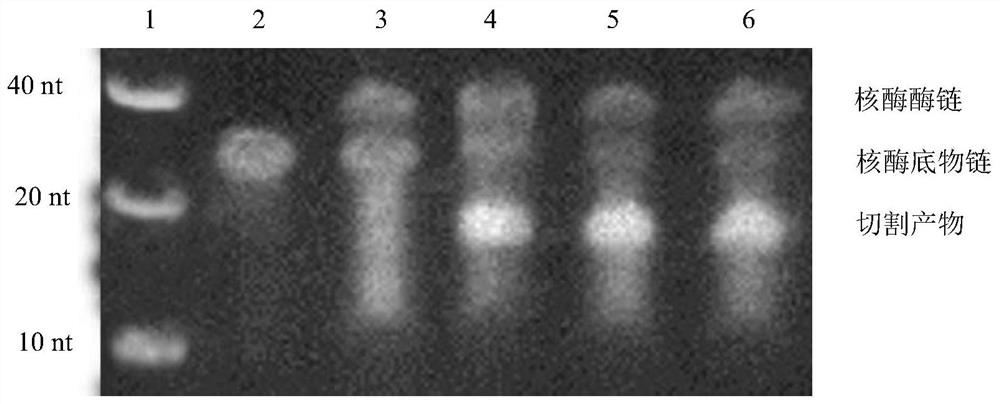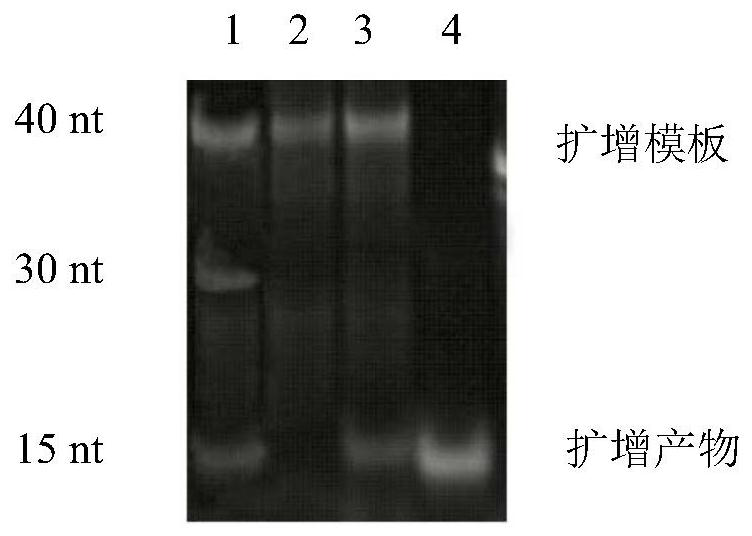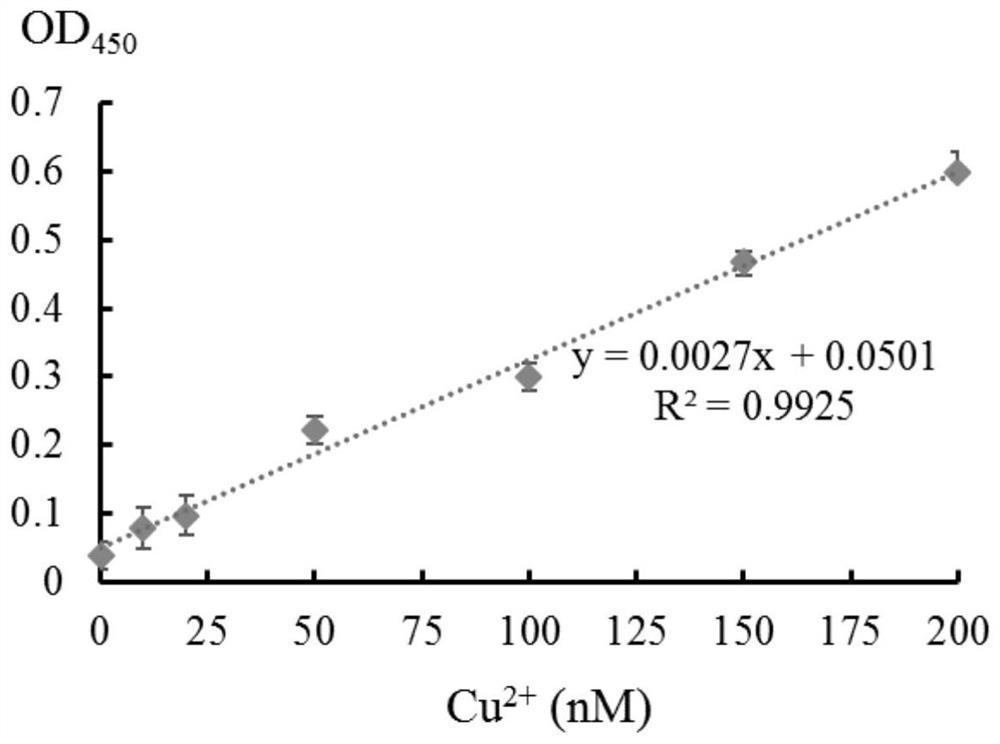A copper high-salt-resistant nucleic acid sensor and its application
A sensor, salt nucleic acid technology, applied in the field of heavy metal detection, can solve the problems of lack of universal applicability and cumbersome sample processing, and achieve the effects of rapid detection, high specificity and sensitivity, and rapid response
- Summary
- Abstract
- Description
- Claims
- Application Information
AI Technical Summary
Problems solved by technology
Method used
Image
Examples
Embodiment 1
[0072] The preparation of embodiment 1 copper ion deoxyribozyme and the production of cleavage product
[0073] The substrate chain, enzyme chain and DNAzyme cleavage products of the DNAzyme designed for copper ions are as follows:
[0074]
[0075] Note: GACTC in the amplification template is the Nt.BstNBI nicking endonuclease recognition sequence, and the first four base pairs of the sequence (between C and A) are the synthetic strand cleavage sites; the ribozyme cuts the target product and amplifies The target products are all completely complementary to the amplification template; the TTGGGGGGT sequence at the end of the ribozyme substrate chain A is added to increase the Tm value of binding to the amplification template D; the copper ion cleavage site is after the -G of the ribozyme substrate chain A .
[0076] The preparation method of copper ion deoxyribozyme:
[0077] Mix 4 μL of 10 μM DNAzyme substrate chain stock solution with 4 μL of 10 μM DNAzyme enzyme chain ...
Embodiment 2
[0079] Embodiment 2 Amplification of copper ion deoxyribozyme cleavage product
[0080] The system for isothermal amplification reaction consists of two parts (system A and system B). Amplification reaction system composition: 30 μL system.
[0081] Part A system composition: 24.2μL system
[0082] Amplification template (1μM stock solution): 6μL (final concentration 0.2μM)
[0083] dNTPs (2.5mM stock solution): 3μL
[0084] Cleavage product of copper ion deoxyribozyme (1 μM): 6 μL, final concentration 0.2 μM
[0085] Ultrapure water: 9.2μL
[0086] Part B system composition: 5.8 μL
[0087] Bst DNA polymerase (8U / μL stock solution): 0.1μL (final concentration 0.02U / μL)
[0088] Polymerase reaction buffer solution (10x stock solution): 3 μL (final concentration 1x)
[0089] Nt.BstNBI nicking endonuclease (10U / μL stock solution): 1.2μL (final concentration 0.37U / μL)
[0090] Nt.BstNBI nicking endonuclease reaction buffer solution (10x stock solution): 1.5 μL (final conc...
Embodiment 3
[0094] Embodiment 3G-Preparation of Quadruplex Functional Nucleic Acid Colorimetric Sensor
[0095] 80 μL enzyme activity buffer (100mM Tris, 120mM NaCl, 10mM MgCl 2 , 100mM KCl, pH8.4), 10μL hemin dilution solution (2μL hemin stock solution (10μM) mixed with 1mL enzyme activity buffer) mixed with 10μL of the material to be developed (i.e. the amplification product), and mixed Afterwards, react at 37°C for 30 minutes to make the amplified product combine with hemin to form a G-quadruplex structure, add 50 μL TMB chromogenic solution, mix well, react at 37°C for 10 minutes, add 50 μL 2M H 2 SO 4 , and mix well to obtain a chromogenic product, and obtain a G-quadruplex functional nucleic acid chromogenic sensor.
[0096] Then carry out microplate reader to measure OD 450 .
PUM
 Login to View More
Login to View More Abstract
Description
Claims
Application Information
 Login to View More
Login to View More - R&D
- Intellectual Property
- Life Sciences
- Materials
- Tech Scout
- Unparalleled Data Quality
- Higher Quality Content
- 60% Fewer Hallucinations
Browse by: Latest US Patents, China's latest patents, Technical Efficacy Thesaurus, Application Domain, Technology Topic, Popular Technical Reports.
© 2025 PatSnap. All rights reserved.Legal|Privacy policy|Modern Slavery Act Transparency Statement|Sitemap|About US| Contact US: help@patsnap.com



